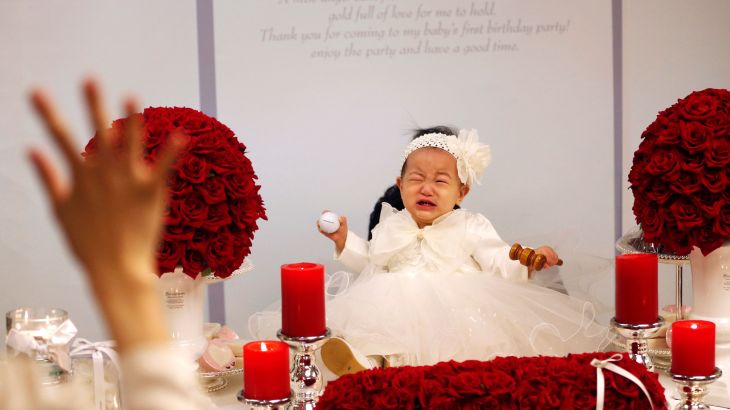Fears for future as South Korea’s fertility rate drops again
South Korea has the lowest fertility rate in the world, with the population expected to halve by 2100.

South Korea’s fertility rate – already the lowest in the world – has fallen yet again, amid fears of “national extinction”, an ongoing debate about how to reverse the trend, and how the country’s work culture and gender relations could be to blame.
Data from Statistics Korea showed on Wednesday that there had been an 8-percent decline in the country’s fertility rate in 2023 compared with the previous year, while experts have said that the country’s population of 51 million may halve by 2100 based on current rates.
Keep reading
list of 3 itemsSouth Korea loves pork and booze. It wants to be the next halal powerhouse
South Korea sets deadline for striking doctors to return to work
South Korea’s government has been spending billions of dollars to try and reverse the trend, as the population continues to shrink.
The average number of babies a South Korean woman is expected to give birth to during her life fell to 0.72 from 0.78 in 2022, and previous projections estimate that this will fall even further, to 0.68 in 2024.
These levels are far below the 2.1 children needed to maintain a country’s population at its current level.
The decline has been especially concentrated in the capital Seoul, where the 0.55 fertility rate was the lowest in the country.
Government efforts to reverse decline
As the country gears up to head to the polls in April, parties have focused on population decline in their campaigns, while the current government has promised to come up with “extraordinary measures” to tackle the situation.
A report from South Korea’s Central Bank showed that the root causes behind the country’s declining fertility rate include challenges around employment, housing, and childcare.
The government has tried some initiatives. More than 360 trillion won ($270bn) has already been spent in areas such as childcare subsidies since 2006, and parents are given a cash payment of two million won ($1,510) upon the birth of a child.
But for many South Korean women, a workaholic culture and ultra-competitive pressure in the workspace means that taking time out to have a baby is too much of a risk, in a country that already has one of the worst gender pay gaps in the Organisation for Economic Co-Operation and Development (OECD).
“Having a baby is on my list, but there’s windows for promotions and I don’t want to be passed over,” said Gwak Tae-hee, a 34-year-old junior manager at a Korean dairy product maker who has been married for three years.
Couples in South Korea also cited high financial burdens as a deterrent to marriage, which is seen as a prerequisite to having children in South Korea.
South Korean mother, Cha Ji-hye, said that she previously spent $5,400 a month on two babysitters for her quadruplets, while her husband works overseas.
“What family can spend that kind of money to raise children?” said Hye, who is on extended leave from her career in nuclear power plants, while her husband works overseas to support the family.
Other countries in the region are also struggling with declining birth rates.
In neighbouring China and Japan, fertility rates hit record lows of 1.09 and 1.26 respectively in 2022.
Japan had more than twice as many deaths as new babies in 2023, while the country faces growing labour shortages.